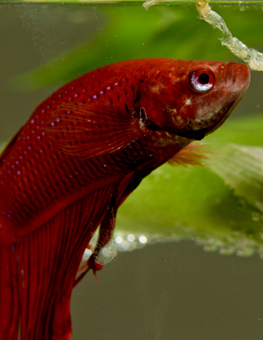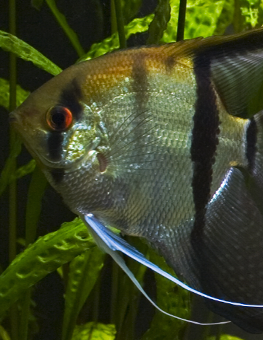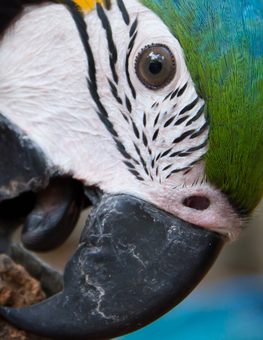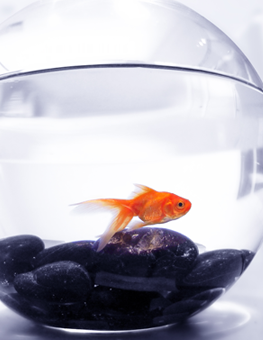Aquarium Cleaning
Your fish will grow and thrive in a tank that is clean and well-maintained.
Periodic aquarium cleaning should coincide with regular water changes. In addition to replacing anywhere from 10% to 25% of the water, uneaten food, decaying organic matter and excess algae growth also must be removed. When you clean your tank, it is also a good time to replace any filter components that may have reached the end of their useful life.
Cleaning supplies
Before you begin the cleaning session, have the following items on hand:
- Gravel vacuum
- De-chlorinating agent
- Fish net
- Empty bucket for waste water
- Paper towels for cleaning up spills
Note: When cleaning, do not change all filter parts at once; this removes too much of the biological filter.
Vacuum cleaning
Your aquarium most likely will have a base of gravel, stone, sand or other comparable material, so you will need to vacuum the bottom with an aquarium gravel cleaner—a clear plastic tube that uses suction to pull water and debris up from the gravel bed. Vacuum cleaning is important: gravel supports much of the bacteria that functions as a biological filter in the aquarium. If the gravel becomes clogged, water cannot circulate through it. As a result, filtration quality suffers and “dead spots” form which in turn generate pollutants.
Here’s a technique to follow for vacuum cleaning:
- As you clean, allow the water and debris to flow up the tube and out of the aquarium into a waiting bucket.
- During the vacuuming process, the water may become cloudy with roiled-up debris. Collect as much free-floating debris as possible to ensure a clean tank.
- After you vacuum the bed, replace the water that was removed with clean, de-chlorinated water.
- Try to add replacement water that is close in temperature to the aquarium water. Fish do not like sudden, extreme temperature changes.
What should you do with the fish?
Unless you are replacing over 50% of the water in the tank, there should be no need to move the fish into a temporary set-up while cleaning is underway. But do keep the following in mind:
- You may find it necessary to put your hands into the aquarium during the cleaning process. If you do, do not wash your hands with soap before inserting them into the aquarium. Soap residue is harmful to fish, which is why you should never use soap when cleaning the inside glass of the aquarium.
- If you have small fish, be careful not to suck them up through the gravel vacuum.
Avoid redecorating
When you are finished cleaning, place all of the plants and decorations, rocks, stones, caves, etc. back into their original places. Fish use these items for marking territory and as hideaways. Rearranging their environment will generate stress in the aquarium. The commotion from cleaning will have been upsetting enough.











